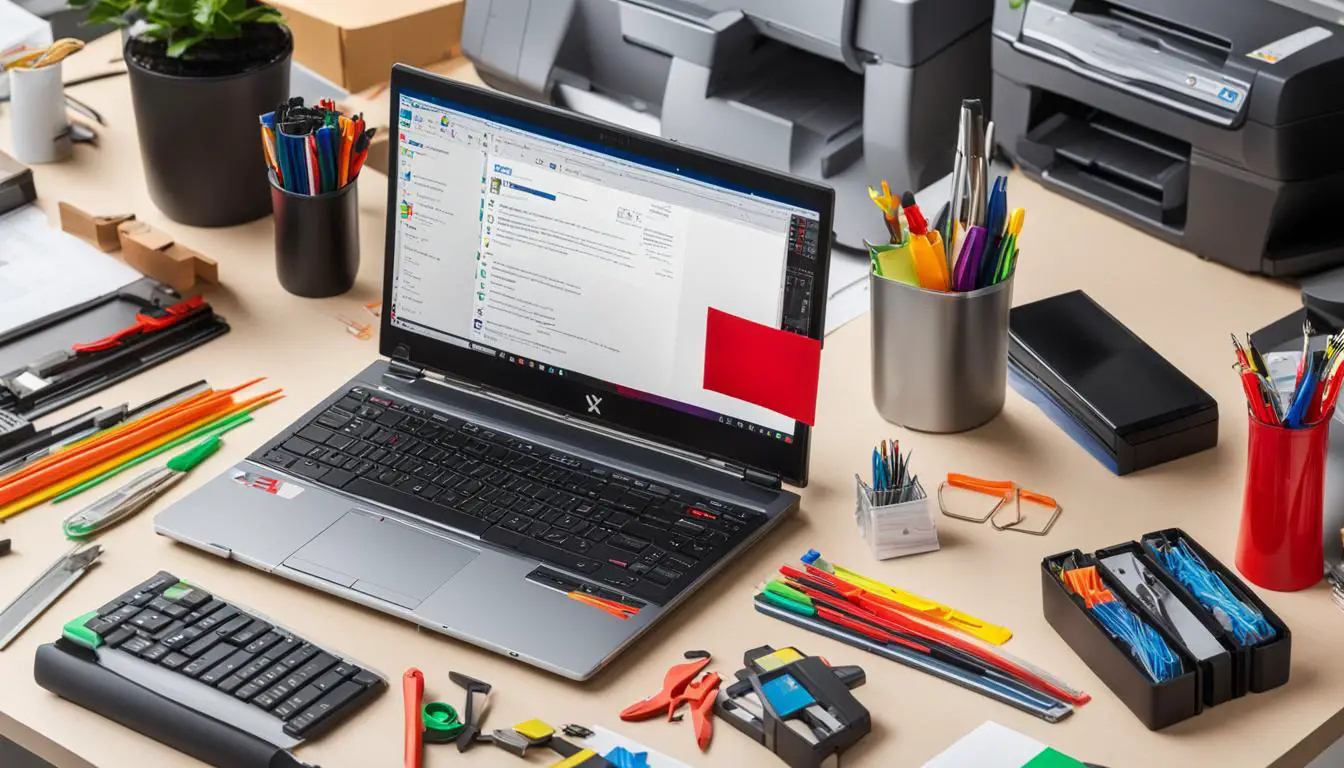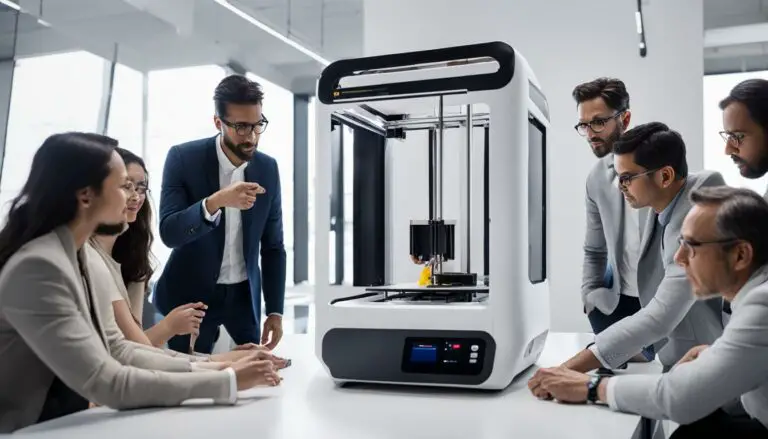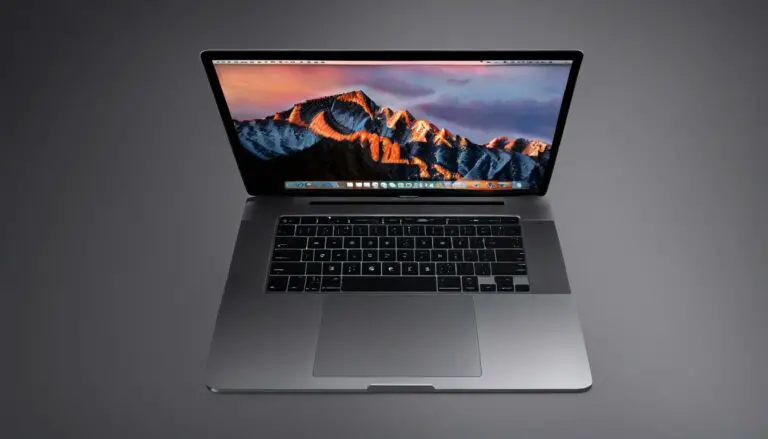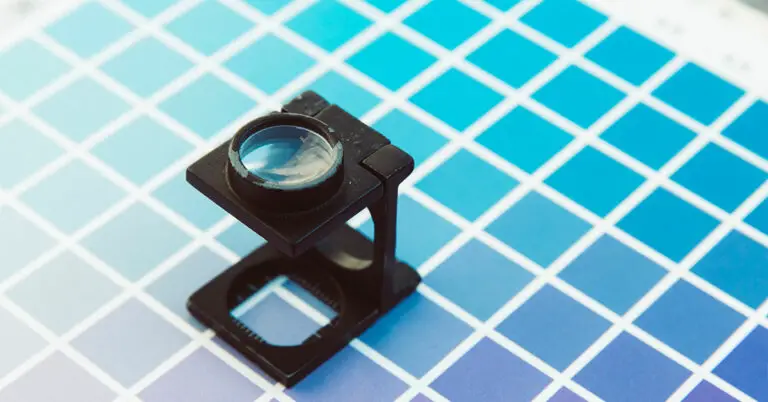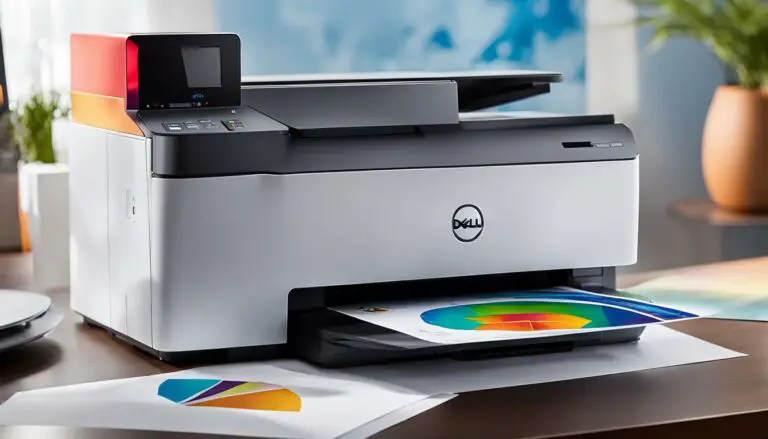Troubleshooting Guide: What to Do If My Printer Won’t Print
Originally posted on November 11, 2023 @ 11:45 pm
If you are experiencing any problems with your printer not functioning properly, it can be aggravating and interrupt your work or personal duties. Nonetheless, there are various measures you can take to troubleshoot and fix common printer issues. In this guide, we will offer you detailed solutions to assist you in restoring your printer’s functionality.
Whether you’re dealing with error lights, printer queue issues, connectivity problems, or other printer malfunctions, we’ve got you covered. By following the troubleshooting steps outlined in this guide, you’ll be able to identify and fix the root cause of your printer not printing.
Key Takeaways:
- Check for error lights on your printer to identify the specific issue.
- Clear the printer queue to remove any stuck print jobs.
- Restart the print spooler to resolve any issues with print job management.
- Ensure proper connectivity between your printer and computer.
- Double-check that you have selected the correct printer.
Check Your Printer’s Error Lights
If you’re experiencing issues with your printer not printing, one of the first things you should do is check for any error lights on the printer itself. These error lights are often a reliable indicator of the specific problem your printer is facing, such as a paper jam or low ink levels. To determine the meaning behind each error light and find the appropriate solution, refer to your printer’s manual or visit the manufacturer’s support website for detailed instructions.
When troubleshooting error lights, it’s crucial to follow the recommended steps carefully to avoid further damage to your printer. For example, if your printer indicates a paper jam, you may need to open specific compartments or remove certain components to clear the jam. Referencing the manual or online resources will guide you through each necessary step, ensuring you address the issue correctly and safely.
| Error Light | Meaning | Solution |
|---|---|---|
| Red light blinking | Paper jam | Check for and remove any jammed paper, ensure proper paper alignment |
| Yellow light blinking | Low ink/toner | Replace the ink/toner cartridge with a new one |
| Green light off | No power | Check power connections, ensure printer is plugged in and turned on |
If you’re unable to resolve the issue based on the error lights or if you have any doubts about handling the problem yourself, consider reaching out to the manufacturer’s customer support for further assistance. They can provide personalized guidance and help you troubleshoot the issue effectively.
Clear the Printer Queue
Sometimes, when you’re facing issues with your printer not printing, the problem may lie in the printer queue. The printer queue is a list of print jobs that are waiting to be processed by the printer. If there are stuck print jobs in the queue, new documents may not be able to print. Clearing the printer queue can help resolve this issue and allow your printer to start printing again.
To clear the printer queue on a Windows computer, you can follow these steps:
- Right-click on the printer icon in the notification area and select “Open All Printers” or go to Settings > Devices > Printers & scanners.
- Locate your printer in the list and select it.
- In the printer queue window, you will see a list of print jobs. Right-click on any stuck print jobs and select “Cancel” or “Delete”.
- Repeat this process for any other stuck print jobs in the queue.
Once you have cleared the printer queue, you can try printing a new document to see if the issue has been resolved.
Example:
I had a frustrating experience with my printer not printing, and I couldn’t figure out why. Then, I learned about the printer queue and how clearing it can help. Following the steps provided, I was able to locate and remove the stuck print jobs in the queue. Afterward, my printer started working perfectly again. It was such a relief to know that such a simple solution could solve the problem!”
| Common Printer Queue Issues | Solutions |
|---|---|
| Print jobs stuck in the queue | Right-click on the stuck print jobs and select “Cancel” or “Delete” |
| Long printing delays due to a large number of print jobs in the queue | Clear the entire printer queue by selecting “Cancel All Documents” or “Purge Print Documents |
| Print jobs not appearing in the queue | Restart the print spooler service |
Restart the Print Spooler
If clearing the printer queue doesn’t solve the problem, you can try restarting the print spooler. The print spooler is a service that manages print jobs on your computer. To restart the print spooler in Windows, you can open the Command Prompt as an administrator and run a series of commands. This can help resolve any issues with the print spooler and allow your printer to start printing again.
The print spooler is an essential component of the printing process. When it stops working, it can cause your printer to malfunction, resulting in printing errors. Restarting the print spooler is a simple yet effective troubleshooting step that can fix common issues.
To restart the print spooler, follow these steps:
- Press the Windows key + R on your keyboard to open the Run dialog box.
- Type “cmd” and press Enter to open the Command Prompt.
- Right-click on the Command Prompt icon in the taskbar and select “Run as administrator.”
- In the Command Prompt window, type the following commands, pressing Enter after each one:
| Command | Description |
|---|---|
| net stop spooler | Stops the print spooler service. |
| net start spooler | Starts the print spooler service. |
Once you have successfully restarted the print spooler, try printing a test document to see if the issue has been resolved. If you’re still experiencing problems, you may need to further troubleshoot or seek assistance from the printer manufacturer’s support website or customer service.
Solidify the Connection
If you’re experiencing issues with your printer not connecting, there are a few steps you can take to solidify the connection and get your printer back online. Start by checking if your printer is connected to the correct Wi-Fi network. Sometimes, printers can accidentally connect to nearby networks with similar names, causing connectivity problems. Ensure that your printer is connected to the correct network with a strong signal.
If your printer is connected wirelessly, you can also try moving it closer to your router. Sometimes, distance and obstacles can weaken the Wi-Fi signal, resulting in connectivity issues. By placing your printer closer to the router, you can strengthen the connection and improve printing reliability.
Another option is to temporarily connect your computer to the printer using a USB cable. This eliminates any potential Wi-Fi issues and allows you to print directly from your computer. If your printer works fine with a USB connection but still has problems when connected wirelessly, it may be worth troubleshooting your Wi-Fi setup or contacting your internet service provider for assistance.
Troubleshooting Wi-Fi Issues
If you’re still experiencing Wi-Fi connectivity issues with your printer, here are a few troubleshooting steps you can try:
- Restart your router: Sometimes, a simple router restart can resolve connectivity problems. Unplug your router from the power source, wait for a minute, and then plug it back in. Allow the router to fully restart before attempting to connect your printer again.
- Check your Wi-Fi password: Ensure that you’re entering the correct Wi-Fi password when connecting your printer. Typos or incorrect passwords can prevent your printer from connecting to the network.
- Reset your printer’s network settings: If all else fails, you can try resetting your printer’s network settings. Refer to your printer’s manual or the manufacturer’s website for instructions on how to do this.
By following these steps, you can troubleshoot and resolve many common printer connectivity issues. Remember to check the Wi-Fi network, consider moving the printer closer to the router, and try connecting via USB if necessary. If the problem persists, explore additional troubleshooting options provided by the printer manufacturer or seek professional assistance.
| Issue | Possible Solution |
|---|---|
| Printer not connecting to Wi-Fi network | Check if printer is connected to correct network and has a strong signal. Move printer closer to router if necessary. |
| Weak Wi-Fi signal | Move printer closer to router or consider using a Wi-Fi range extender. |
| Printer works with USB connection but not wirelessly | Troubleshoot Wi-Fi setup, check router settings, or contact internet service provider for assistance. |
Ensure You Have the Right Printer
When it comes to troubleshooting printer issues, one common mistake that can cause frustration is selecting the wrong printer. If you have multiple printers connected to your computer, it’s essential to double-check that you are choosing the correct printer when sending a print job. This simple oversight can easily lead to printing problems, as your computer may default to the wrong printer.
To ensure you have the right printer selected, follow these steps:
- Open the document or file you want to print.
- Click on the print menu or press Ctrl + P on your keyboard.
- In the printer options, check the printer name and make sure it is the correct one.
- If the wrong printer is selected, click on the dropdown menu and choose the right printer.
- Verify that the correct printer is also set as the default printer in your computer’s settings.
By taking a few extra moments to confirm the printer selection, you can avoid unnecessary printing issues and ensure your documents are sent to the right device.
Why Choosing the Correct Printer Matters
Selecting the correct printer is crucial for several reasons. First, it ensures that your document is sent to the printer you intended, avoiding any mix-ups or confusion. Secondly, choosing the right printer allows you to take advantage of specific features or settings that may be unique to that particular device. Additionally, selecting the correct printer helps streamline your printing process, saving you time and minimizing potential frustration.
Remember, if you’re still experiencing issues despite selecting the right printer, it’s important to consult the manufacturer’s support website or contact their customer support for further assistance.
| Printer Selection Tips | Benefits |
|---|---|
| Double-check the printer name before printing | Avoid sending documents to the wrong device |
| Set the correct printer as the default in your computer’s settings | Streamline the printing process |
| Contact the manufacturer’s support for assistance | Get expert help in resolving any persistent printer issues |
Check That the Paper Tray Is Full (Not Jammed)
When troubleshooting printing issues, it’s essential to ensure that the paper tray of your printer is both full and not jammed. A misaligned or jammed paper tray can prevent your printer from picking up the paper and result in frustrating printing problems. To resolve this issue, follow the steps below:
1. Remove the paper tray
Carefully remove the paper tray from your printer. Take a few moments to inspect the tray and check for any visible paper jams or obstructions. Clear away any debris or stuck paper that may be causing the issue. It’s important to note that different printer models have different mechanisms for removing the paper tray, so consult your printer’s manual for specific instructions if needed.
2. Re-align the paper
After removing any paper jams or obstructions, re-align the paper in the tray. Ensure that the paper stack is neatly arranged and not exceeding the maximum paper capacity specified by your printer’s manual. Also, check that the guides in the tray are adjusted to properly hold the paper in place. Avoid overfilling the tray, as this can lead to paper jams and subsequent printing issues.
3. Securely place the paper tray back
Once the paper has been re-aligned, securely place the paper tray back into the printer. Ensure that it slides in smoothly and locks into place. Double-check that the tray is properly seated and aligned with the printer’s paper path. This will ensure that the printer can accurately pick up the paper and feed it through for printing.
By following these steps and checking that the paper tray is both full and not jammed, you can eliminate one potential issue that may be preventing your printer from printing properly. If you continue to experience printing problems, refer to the other sections of this troubleshooting guide to address other potential causes.
Table: Troubleshooting Steps for Paper Tray Issues
| Steps | Description |
|---|---|
| 1 | Remove the paper tray |
| 2 | Clear any paper jams or obstructions |
| 3 | Re-align the paper stack |
| 4 | Ensure proper paper placement and alignment |
| 5 | Securely place the paper tray back into the printer |
Install the Drivers and Software
If you’re facing issues with your printer not printing, one of the first steps you should take is to ensure that you have the correct drivers and software installed. Outdated or missing drivers can cause compatibility issues and prevent your printer from functioning properly.
To install the drivers and software for your printer, follow these steps:
- Check for a driver installation CD that came with your printer. If you have one, insert it into your computer’s CD drive and follow the on-screen instructions to install the drivers and software.
- If you don’t have a driver installation CD, you can visit the manufacturer’s website and download the latest drivers and software for your printer. Look for a support or downloads section on the website, search for your printer model, and select the appropriate drivers for your operating system.
- Once you’ve downloaded the drivers, double-click on the installation file to start the installation process. Follow the on-screen instructions to complete the installation.
- After the installation is complete, restart your computer to ensure that the drivers are properly installed and recognized by your operating system.
By installing the correct drivers and software for your printer, you can ensure that it is properly recognized and able to communicate with your computer, allowing you to print without any issues. If you’re still experiencing problems after installing the drivers, continue troubleshooting using the other steps outlined in this guide.
“Having the correct drivers and software installed is crucial for your printer to function properly. Make sure you follow the instructions provided by the manufacturer to ensure a successful installation.”
Add Printer
If you’re facing the issue of your printer not being detected by your computer, you may need to manually add it. Here’s how you can do it:
Windows 10:
- Go to Settings and select Devices.
- Click on Printers & scanners.
- Click the “Add a Printer or Scanner” button.
- Follow the on-screen instructions to add your printer to the list of available printers.
Mac:
- Go to System Preferences and select Printers & Scanners.
- Click the “+” button to add a new printer.
- Follow the on-screen instructions to connect and set up your printer.
By manually adding your printer, you ensure that your computer recognizes it and can communicate with it properly. If you’re still experiencing issues with your printer not being detected, you may need to consult the manufacturer’s support website or contact their customer support for further assistance.
Remember, properly setting up your printer and ensuring it is detected by your computer is crucial for a smooth printing experience. Following the steps above should help you resolve any issues related to adding your printer.
| Common Printer Setup Issues | Possible Solutions |
|---|---|
| Printer not being detected by computer | Manually add the printer in your computer’s settings. |
| Connection issues between printer and computer | Check Wi-Fi connectivity and consider using a USB cable for a direct connection. |
| Incorrect printer selected for printing | Double-check the printer selection in your print menu and computer’s default printer settings. |
| Lack of proper printer drivers | Install the latest drivers and software for your printer from the manufacturer’s website. |
| Printer setup errors | Follow the manufacturer’s instructions carefully for proper printer setup and configuration. |
Conclusion
Resolving printer problems can be a frustrating experience, but by following the steps outlined in this troubleshooting guide, you should be able to overcome most common issues. Remember to check for error lights on your printer and consult your printer’s manual or the manufacturer’s support website for guidance. Clearing the printer queue and restarting the print spooler can also help resolve printing issues.
Ensure that your printer is properly connected to the correct Wi-Fi network or try connecting it directly to your computer using a USB cable. Double-check that you have selected the correct printer when sending a print job and that the paper tray is properly aligned and not jammed. Make sure to install the latest drivers and software for your printer from the manufacturer’s website.
If you’re still experiencing printer problems after following these troubleshooting steps, it’s recommended to visit the manufacturer’s support website or reach out to their customer support for further assistance. They will be able to provide you with additional guidance and solutions specific to your printer model.
FAQ
What should I do if my printer won’t print?
If your printer is not printing, there are several troubleshooting steps you can take. Check for error lights on the printer, clear the printer queue, restart the print spooler, ensure proper connectivity, select the correct printer, check the paper tray, install the drivers, and add the printer if necessary. If these steps don’t solve the issue, consult the manufacturer’s support website or contact customer support.
How do I check for error lights on my printer?
Look for any error lights on the printer itself. These lights can provide information about specific issues, such as a paper jam or low ink levels. Consult your printer’s manual or the manufacturer’s support website to understand what each error light means and how to fix it.
How do I clear the printer queue?
To clear the printer queue, right-click on the printer icon in the notification area (Windows) or go to Settings > Devices > Printers & scanners. From there, view the queue and remove any stuck print jobs to allow new documents to print.
How do I restart the print spooler?
To restart the print spooler in Windows, open the Command Prompt as an administrator and run a series of commands. This can help resolve any issues with the print spooler and allow your printer to start printing again.
How can I resolve connectivity issues with my printer?
Start by checking if your printer is connected to the correct Wi-Fi network and if the signal strength is strong enough. You can also try connecting your computer to the printer using a USB cable to eliminate any Wi-Fi problems. Moving the printer closer to the router can also improve the connection.
What should I do if I have multiple printers connected to my computer?
Make sure to select the correct printer when sending a print job. Windows may default to the wrong printer. Choose the correct printer from the print menu and verify that the correct printer is selected as the default printer in your computer’s settings.
How can I check if the paper tray is causing printing issues?
Check that the paper tray is properly aligned and not jammed. A misaligned or jammed paper tray can prevent the printer from picking up the paper. Remove the paper tray, check for any paper jams, re-align the paper, and ensure it is securely placed back in the tray.
How do I install the latest drivers and software for my printer?
Ensure that you have the latest drivers and software installed for your printer. Most printers come with a driver installation CD or you can download the drivers from the manufacturer’s website. Follow the instructions provided to install the drivers and software correctly.
What should I do if my printer is not being detected by my computer?
You may need to add the printer manually. In Windows 10, go to Settings > Devices > Printers & scanners and click the “Add a Printer or Scanner” button. Follow the on-screen instructions to add your printer to the list of available printers. On a Mac, go to System Preferences > Printers & Scanners and click the “+” button to add a new printer.
What steps should I follow to troubleshoot my printer?
Follow the steps outlined in this guide to resolve most common printer problems. Check error lights, clear the printer queue, restart the print spooler, ensure proper connectivity, select the correct printer, check the paper tray, install the drivers, and add the printer if necessary. If issues persist, consult the manufacturer’s support website or contact their customer support for further assistance.

